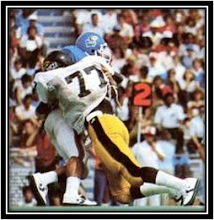
It is the opinion of this blog that the resurrection of Shocker football will be difficult without the help of the student body. This is a sensitive issue for good reason as the cost of tution is one that continues to rise. However, I would like to look at one University that is making its dream of a new football stadium come true by finding a unique way to finance it together. The students of North Texas have answered the call of the alumni by voting to fund 50% of the new stadium with a student fee increase. The other 50% will be the responsability of the alumni, fans, and corporate sponsors. The stadium is not being funded on the backs of one single group, but by the whole UNT family.
If the students at Wichita State voted to do the exact same thing, here is how it would break down. WSU generated 283,646 credit hours during the 2006-2007 scholastic year without including summer school. For the sake of simplicity in this example, let's assume the exact number was 300,000. The additional $10 fee per credit hour would raise roughly 3 million dollars a year to help fund football and any additional sports needed to help satisfy Title IX. It may not be enough, but it is a very strong start and would keep WSU out of the proverbial black hole it so desperately never wants to see again. For more information, check out the following link. http://www.meangreensports.com/ViewArticle.dbml?DB_OEM_ID=1800&ATCLID=1606591



.png)
.png)

